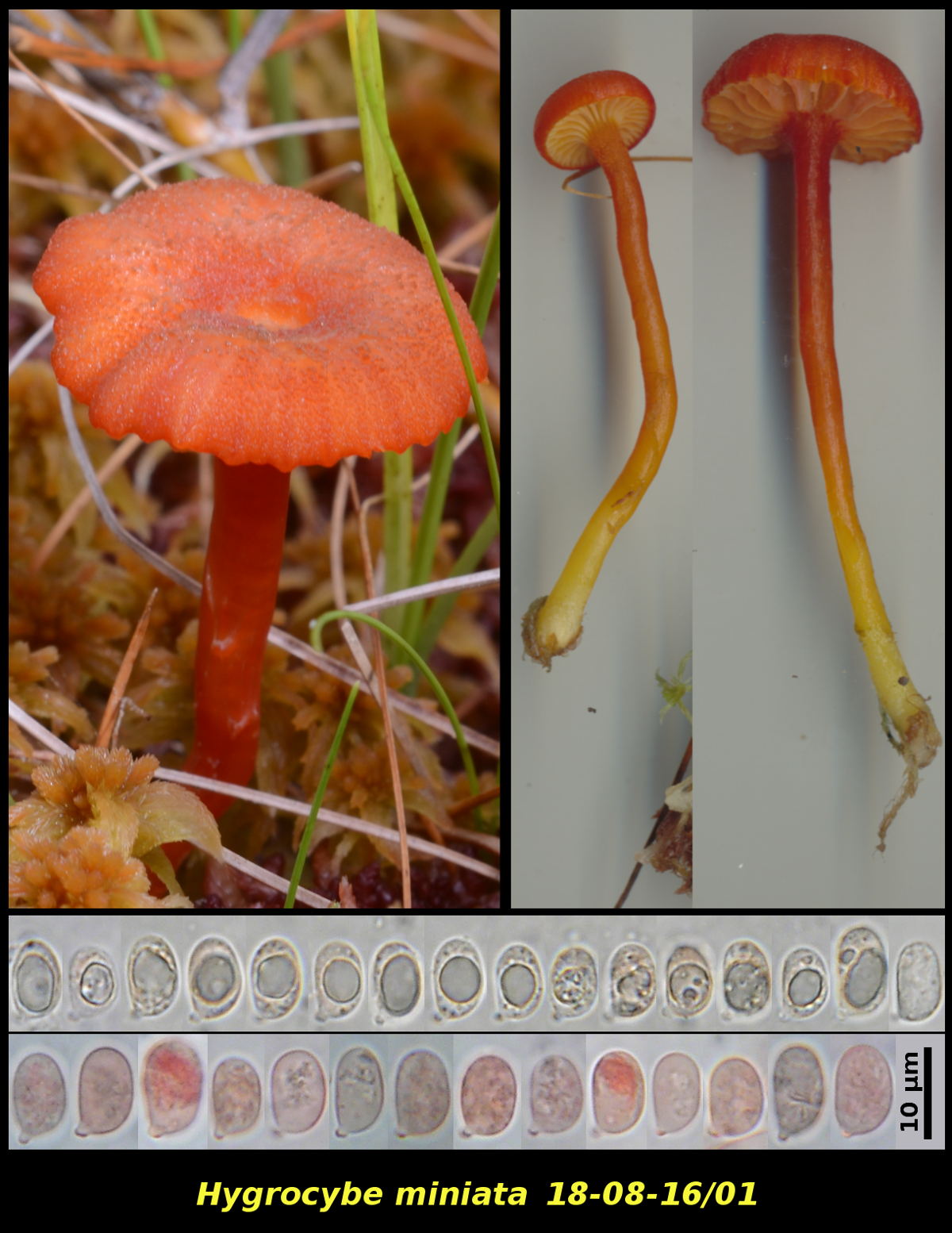Fleshy Fungi of New Brunswick >>
Hygrocybe miniata
Hygrocybe miniata (Fr.) P. Kumm.

Gregarious in a Sphagnum carpet in small bog, Nepisiguit Protected Natural Area, New Brunswick (18-08-16/01).
Basidiospores forming a white spore print, broadly ellipsoidal, smooth, 7.0-9.4 X 4.6-5.8 μm, D/d = 1.28-1.82 (average [30]: 8.1 X 5.1 μm, D/d = 1.58) from spore print in water, 8.0-10.3 X 4.8-6.0 μm, D/d = 1.48-1.94 from lamella in KOH + Congo Red (average[19]: 8.9 X 5.5 μm, D/d = 1.63).
Identification within the group of Hygrocybe species with red scaly caps remains difficult. Collection 18-08-16/01 might be assignable to H. cantharellus, H. miniata or H. turunda depending upon which authorities you follow. According to most authors, the pileal scales of H. turunda should have black tips, while those of the other two species should be uniformly red. In 18-08-16/01 the scales indicate the latter two. Between these, H. cantharellus should have strongly decurrent gills while those of H. miniata should be adnate or, at most, slightly decurrent.
The shape and size of basidiospores have also been used to distinguish members of this group. According to European authors (eg. Funga Nordica) spores of H. miniata are rather distinctly constricted and often have a lobed appearance, something not seen in 18-08-16/01. Hygrocybe turunda var. sphagnophila (Peck) Bon, a species characteristically on Sphagnum is described as having the pileal scales "somewhat darkened" and with basidiospores 10-14 X 5-9 μm. The closest match to 18-08-16/01 is reported from Nova Scotia by Bird & Grund (Nova Scotian species of Hygrophorus, The Nova Scotia Museum, 1979) as H. miniatus.
Basidispore sizes seem to be important in differentiating species and this may differ slightly depending upon the conditions under which they are measured. Hence the top row of spores in the illustration here, photographed from a water mount from a spore print, are slightly smaller than those in the bottom row, photographed from a piece of gill mounted in KOH + Congo Red.
Photo: D. Malloch (18-08-16/01).